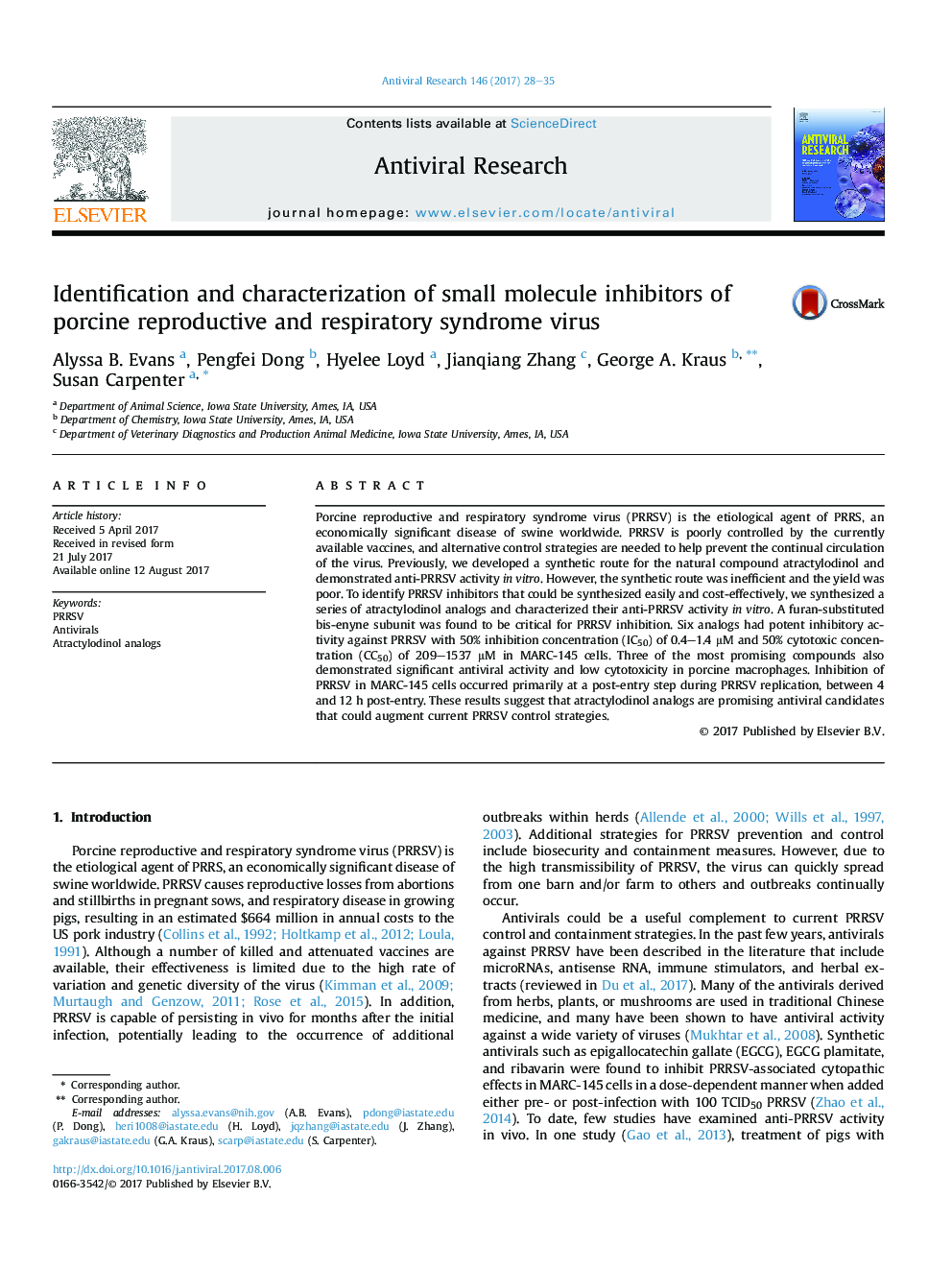| Article ID | Journal | Published Year | Pages | File Type |
|---|---|---|---|---|
| 5551670 | Antiviral Research | 2017 | 8 Pages |
â¢Developed efficient routes for synthesis of atractylodinol analogs that inhibit PRRSV replication.â¢Determined the presence of a bis-enyne subunit was critical for optimal antiviral activity.â¢Identified six analogs of atractylodinol with IC50 of 0.4-1.4 mM in vitro.â¢Determined inhibition of PRRSV in MARC-145 cells occurs primarily at a post-entry step during virus replication.
Porcine reproductive and respiratory syndrome virus (PRRSV) is the etiological agent of PRRS, an economically significant disease of swine worldwide. PRRSV is poorly controlled by the currently available vaccines, and alternative control strategies are needed to help prevent the continual circulation of the virus. Previously, we developed a synthetic route for the natural compound atractylodinol and demonstrated anti-PRRSV activity in vitro. However, the synthetic route was inefficient and the yield was poor. To identify PRRSV inhibitors that could be synthesized easily and cost-effectively, we synthesized a series of atractylodinol analogs and characterized their anti-PRRSV activity in vitro. A furan-substituted bis-enyne subunit was found to be critical for PRRSV inhibition. Six analogs had potent inhibitory activity against PRRSV with 50% inhibition concentration (IC50) of 0.4-1.4 μM and 50% cytotoxic concentration (CC50) of 209-1537 μM in MARC-145 cells. Three of the most promising compounds also demonstrated significant antiviral activity and low cytotoxicity in porcine macrophages. Inhibition of PRRSV in MARC-145 cells occurred primarily at a post-entry step during PRRSV replication, between 4 and 12 h post-entry. These results suggest that atractylodinol analogs are promising antiviral candidates that could augment current PRRSV control strategies.
